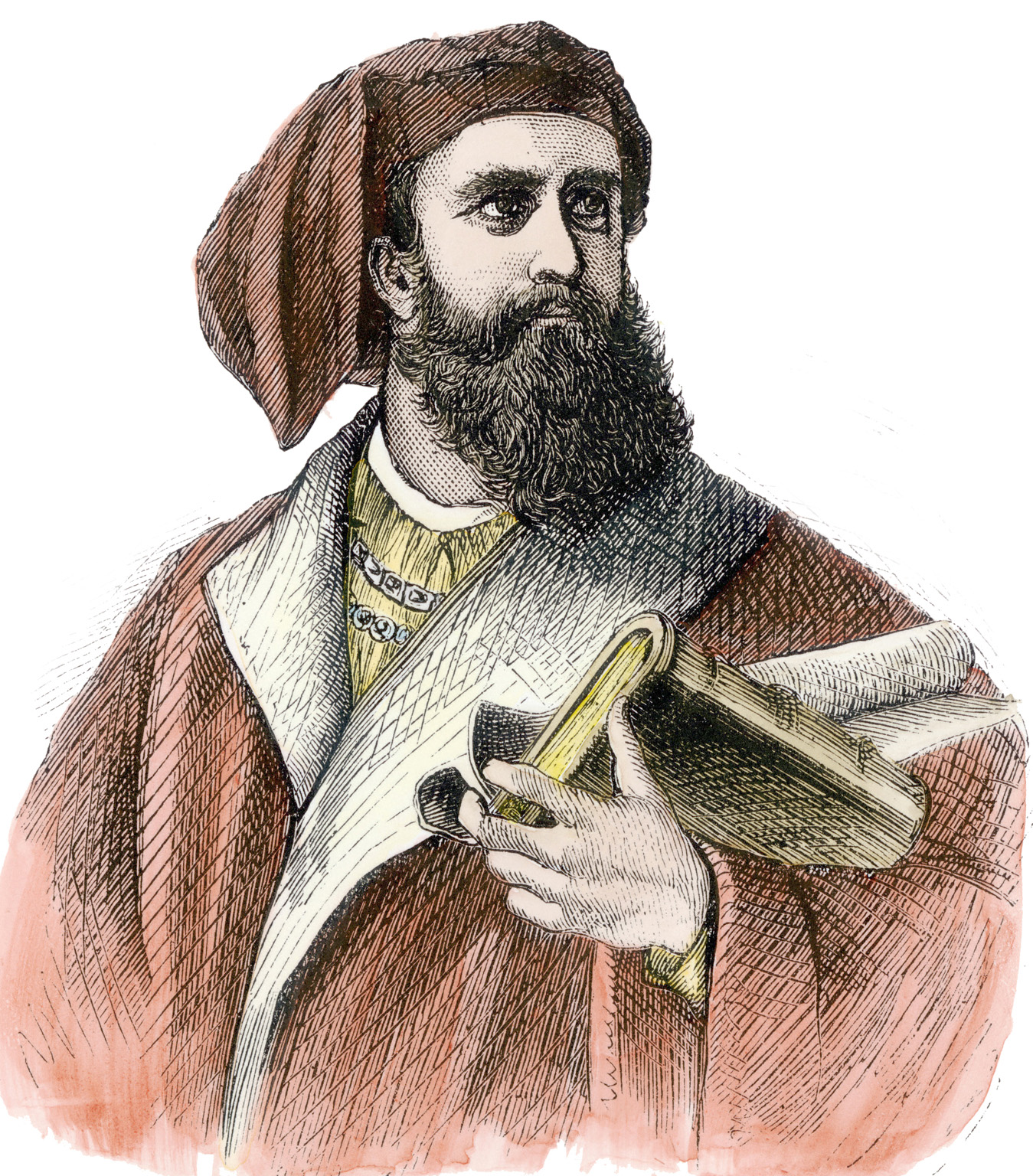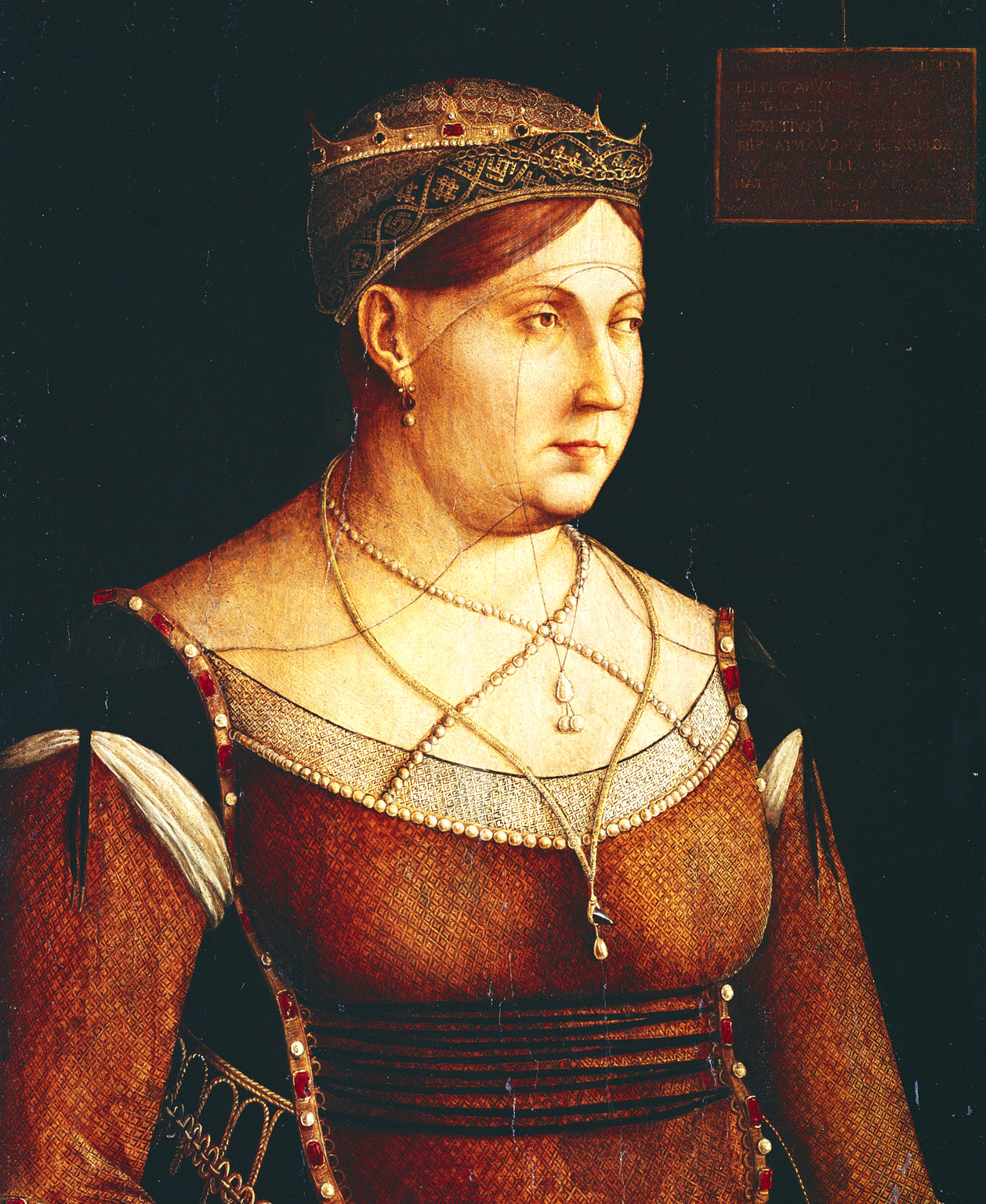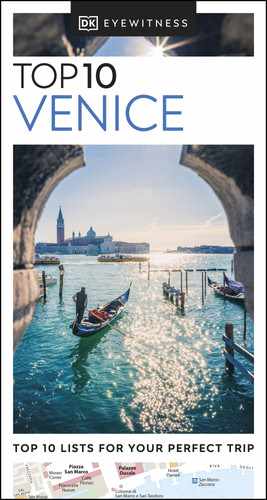FAMOUS VENETIANS
1. Marco Polo
Legendary Cathay and the kingdom of the mighty Kublai Khan took pride of place in the explorer Marco Polo’s best-selling account of his 20-year odyssey to the Far East, Book of the Marvels of the World. Son of a Venetian merchant, Polo (1254–1324) is responsible for the introduction of pasta and window blinds to the western world.

Marco Polo
2. Antonio Vivaldi
Vivaldi (1678–1741) was both an accomplished musician and an influential Baroque composer. Of his 500 concertos, The Four Seasons is the best known. J S Bach was a noted fan and transcribed ten of the Italian’s concertos. Vivaldi spent extended periods teaching music at the Pietà home for girls.
3. Giacomo Casanova
This marvellous romantic figure (1725–98) was variously a diplomat, scholar, trainee priest, adventurer, gambler, notary’s clerk, violinist, womanizer, exile, millionaire, writer and spy. Casanova was imprisoned in the Doge’s Palace on charges of being a magician, from where he effected an infamously daring escape.

Giacomo Casanova
4. Claudio Monteverdi
This late Renaissance madrigalist (1567–1643) is attributed with the introduction of the solo voice to theatre. His opera Proserpina Rapita was the first to be performed in Venice. After long periods at the court of the Gonzagas, he accepted an appointment at the Basilica di San Marco and worked for the Scuola Grande di San Rocco.
5. John Cabot
Italian navigator Giovanni Caboto, or John Cabot (1450–99), and his sons were authorized by Henry VII of England to search for new lands with the aim of furthering trade. Believing himself on the north-east coast of Asia, he landed on Newfoundland in Canada and claimed it for England, opening up cod fishing.
6. Elena Lucrezia Corner Piscopia
It was inconceivable for the church in 1678 that a woman should teach religion, so the University of Padua awarded this child prodigy and the first female graduate (1646–84) a degree in philosophy, instead of one in theology to which she aspired.
7. Daniele Manin
Organizer of the 1848 rebellion against Austrian rule, the Venetian patriot (1804–57) is commemorated by a statue in Campo Manin. An independent “republic” was declared and survived 17 months of bombardments and even cholera, concluding with Manin’s exile to Paris.
8. Paolo Sarpi
In 1509 when the pope excommunicated Venice for insubordination, which involved restrictions on church construction and the refusal to hand over two priests on criminal charges, Sarpi (1552–1623) resolved the rupture. A patriot and theologian, he was an advocate of division between State and Church.
9. Caterina Cornaro
This Venetian noblewoman (1454–1510) married the king of Cyprus then allegedly poisoned him, thus securing the strategic island for Venice. Her return to the city was an occasion of great pomp, recalled to this day in a waterborne procession during the Regata Storica. Cornaro’s reward was the hilltown of Asolo.

Caterina Cornaro
10. Luigi Nono
This musician (1924–90) made milestone progress in the field of electronic music, and an archive named after him was set up in Venice in 1993. A committed Communist, his works were often provocative.

Avant-garde composer Luigi Nono
TOP 10 FOREIGN COMMUNITIES
1. French
Impressionist painter Claude Monet and writers Théophile Gautier and Marcel Proust were attracted to the city in the late 1800s.

Artist Claude Monet’s painting Le Grand Canal
2. Greeks
Here since 1498, the Greeks are the longest surviving group, still active with their own church.
3. Armenians
Fleeing Turkish invasion, in 1717 the close-knit religious group was granted an island by the Republic (see Lido: San Nicolò).
4. Dalmatians (Slavs)
Traders from a historical region of Croatia, whose boats gave their name to the Riva degli Schiavoni.
5. Turks
Although the Turks were enemies of Venice, the Republic still rented them a trade centre between 1621 and 1898.
6. Jews
The Spanish Inquisition triggered the move here for many Jews expelled from other European countries.
7. Albanians
Calle degli Albanesi near Piazza San Marco is named in honour of this large 15th-century community.
8. Germans
The former German trade headquarters Fondaco dei Tedeschi attracted artists such as Albrecht Dürer.
9. British
Extended sojourns here were de rigueur for the British upper class during the 19th-century Grand Tour.
10. Americans
Leading literary figures and patrons of the arts have paid long-term visits since the 19th century.
